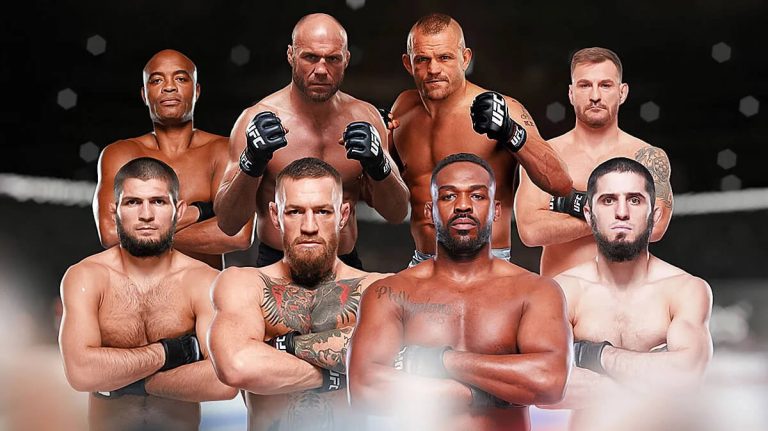If you’ve ever watched a UFC event, you know it’s a huge spectacle with incredible athletes from all over the world. It might make you wonder: “Just how many fighters are actually in the UFC?” It’s a great question, but the answer isn’t a simple, fixed number!
The Ever-Changing World of the UFC Roster
Think of the UFC roster not like a team with a set number of players, but more like a bustling marketplace that’s always got people coming and going. The number of fighters under contract with the UFC is constantly changing for a few key reasons:
- New Faces Arriving: The UFC is always on the lookout for fresh talent. Fighters might get signed after impressing on shows like “Dana White’s Contender Series,” or they might be top performers from other fighting organizations around the globe.
- Fighters Moving On: Not everyone stays in the UFC forever. Fighters can be released from their contracts if they lose too many fights in a row, if they’re inactive for too long due to injuries, or if their contract simply expires and isn’t renewed.
- Retirements: Some fighters choose to hang up their gloves after a long career, or sometimes even after a tough loss.1
- Injuries: MMA is a tough sport, and injuries are common.2 A fighter might be signed to the UFC but be out of action for months or even years while recovering. This means they are on the roster but not actively competing.
Because of all these ins and outs, there isn’t one exact number of UFC fighters that stays the same day after day.
So, What’s the Current Estimate?
While the number changes, we can give you a good idea. As of mid-2024 to early 2025, the UFC generally has somewhere between 600 and 850 active fighters under contract at any given time. Some sources might lean towards the higher end, especially if they count every single person with a valid contract, even if they’re currently injured. Others might focus only on those who are regularly competing.
This large number is necessary because the UFC puts on events almost every single weekend, and they need a deep pool of talent to fill all those fight cards!
How the UFC Roster is Organized: Weight Classes
You’ve probably noticed that fighters don’t just fight anyone – they fight people roughly their own size. This is thanks to weight classes, which are super important for fair and safe competition in MMA. Imagine a tiny flyweight fighting a giant heavyweight – it wouldn’t be fair or safe!
The UFC divides its fighters into different weight classes, each with its own set of contenders, rankings, and a champion.3
Men’s Weight Classes (from lightest to heaviest):
- Flyweight: (up to 125 lbs / 56.7 kg)
- Bantamweight: (up to 135 lbs / 61.2 kg)
- Featherweight: (up to 145 lbs / 65.8 kg)
- Lightweight: (up to 155 lbs / 70.3 kg) – Often considered one of the most competitive divisions!
- Welterweight: (up to 170 lbs / 77.1 kg)
- Middleweight: (up to 185 lbs / 83.9 kg)
- Light Heavyweight: (up to 205 lbs / 93.0 kg)
- Heavyweight: (up to 265 lbs / 120.2 kg) – The “big boys” of the UFC!
Women’s Weight Classes (from lightest to heaviest):
- Strawweight: (up to 115 lbs / 52.2 kg)
- Flyweight: (up to 125 lbs / 56.7 kg)11
- Bantamweight: (up to 135 lbs / 61.2 kg)
- Featherweight: (up to 145 lbs / 65.8 kg)
Each of these classes needs a healthy number of fighters so that there are always exciting matchups and new challengers for the champions.
The Road to Becoming a UFC Fighter
So, how do fighters actually get on this impressive roster? It’s a very challenging journey!
- Start Local: Most fighters begin their careers in smaller, regional MMA promotions. They build up their skills, gain experience, and try to create an impressive “win-loss record.”
- Get Noticed: UFC scouts and matchmakers are always watching these smaller shows for promising talent.
- Dana White’s Contender Series (DWCS): This is a hugely popular pathway. Aspiring fighters get to compete in front of UFC President Dana White and other executives. If they put on a standout performance, they can earn a direct UFC contract! Many current UFC stars got their start this way.
- Other Big Promotions: Sometimes, the UFC will sign already established champions or top contenders from other major MMA organizations around the world.
It takes immense dedication, skill, and often a bit of luck to make it to the UFC.
Why Does the UFC Need So Many Fighters?
Beyond just filling weekly events, there are several business reasons for the UFC’s large roster:
Global Reach: The UFC is a global company. They have fighters from dozens of different countries, helping them appeal to fans all over the world.15
Depth for Events: Injuries, visa issues, or last-minute problems can cause fights to be canceled. A large roster means the UFC has more options to find replacement fighters and keep their events running smoothly.
Creating Stars: With many fighters, there’s always a chance for a new, exciting personality or a dominant champion to emerge, which creates more buzz and attracts more fans.
Competitive Balance: A deep roster ensures that every weight class is competitive, pushing fighters to be their best and leading to more thrilling fights.
Conclusion
So, while you won’t find one single, unchanging number, the UFC typically has a roster of hundreds of fighters at any given time. This large and constantly evolving group is carefully organized into weight classes to ensure fair fights. It’s a testament to the UFC’s global reach and its need to consistently put on exciting, world-class mixed martial arts events for fans around the globe.
Further Reading:


